The Labrador growth chart has become one of the simplest, yet most powerful dog tools for Labs as it helps all those adorable canines and their owner to know whether they are developing in the proper manner.
Making sure that your Lab puppies are healthy and well-developed is crucial, especially for breeders who sell high-quality pups of this breed.
Of course, this growth chart doesn’t need to be blindly followed, but it’s definitely a worthy guideline for people who’d like to have a general reference related to the growth of their pups.
Everything You Need To Know About The Labrador Growth Chart
Labrador Puppy Weight Chart
| Age | Male weight | Female weight |
|---|---|---|
| Two months | 10-15 lbs | 5-10 lbs |
| Three months | 20-30 lbs | 20-25 lbs |
| Four months | 30-40 lbs | 25-35 lbs |
| Five months | 35-45 lbs | 30-40 lbs |
| Six months | 40-50 lbs | 35-45 lbs |
| Seven months | 50-60 lbs | 40-50 lbs |
| Eight months | 55-65 lbs | 45-55 lbs |
| Nine Months | 60-70 lbs | 45-60 lbs |
| Ten Months | 60-70 lbs | 50-60 lbs |
| Eleven months | 65-75 lbs | 55-65 lbs |
| One year | 65-80 lbs | 55-70 lbs |
Labrador Retriever Puppy Growth Chart By Weeks And Months
First Two Weeks
If you’re a breeder or a dog owner who just got their first litter of Lab puppies, I’m sure you’re excited, and wondering whether there’s anything you can do at this moment.
The answer is quite simple – no. Newborn puppies are completely dependent on their mother, which is why Labrador moms (or mothers of any other breed) never let anyone come near their offspring.
They have the natural instinct to protect their young and find everyone and everything that comes near them a potential threat.
Considering that the puppies are most vulnerable during this period as they can neither hear nor see, the urge of their mother to protect them is completely understandable.
Their inability to interact with anyone except their mother (by breastfeeding) will only last for a short time. However, that’s exactly why Lab pups should be left with their mother – to develop properly and receive the best from their mother’s milk.
After two weeks, the puppies will slowly start noticing things around them, and they’ll hear sounds for the first time.
If you’re also taking care of the mother, you need to ensure that she is receiving enough food in order for her to maintain her strength and continue to provide adequate milk for her babies.
Three To Four Weeks
At three to four weeks, all of the puppies from the litter should already be able to see and hear quite well. Their sight and hearing might not be completely clear, but it should be good enough for the puppies to become aware of their environment.
Labrador Retriever puppies are very interesting at this point as they start making their first interactions with their littermates, so make sure to prepare your camera as you’ll be able to catch some of the sweetest moments between those furry fluffs!
As they get closer to their first month of age, the mother will begin the process of weaning. You will notice the first signs of this by the lack of her presence during usual meal times.
Even if you don’t recognize any unusual behavior on the mother’s side, you can begin introducing puppy food as soon as the pups get close to their first month of life.
However, make sure that you don’t start with kibble or any other food that might be too chewy or dry for their tender teeth. Instead, go with the wet dog food of your choice.
There are a great number of dog food brands on the market, so make sure that you get the one that contains only high-quality ingredients, which will help your pups develop properly.
This period is crucial for Lab doggies as they learn the basics of socialization and interactions not only with other animals, but with people as well.
Still, before you start with the training, make sure that you give the pups plenty of opportunities to play with their siblings, which will help them socialize with everyone else around them.
Eight Weeks
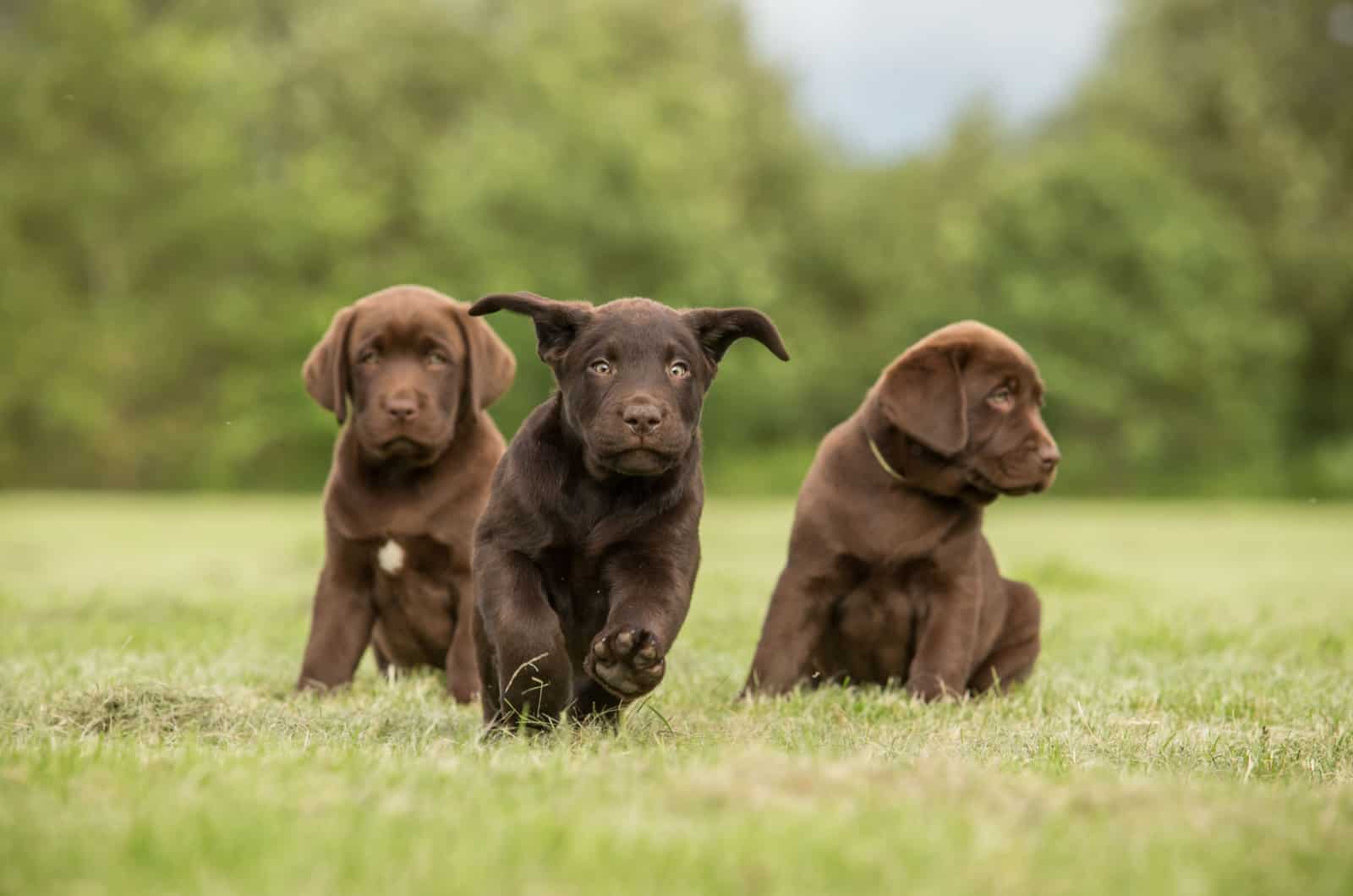
At this point in their life, there is no need to worry whether your puppies will be able to survive without their parent (mother) as they should be already used to the puppy food that you provide them with.
There is no reason for the mother to keep nursing them, especially as the puppies aren’t able to get enough beneficial nutrients from dog food if they’re not completely off their mother’s breast.
Now is officially the time to provide the canines with three meals during the day. It’s important to decide upon the right meal size, which is best decided on the amount of weight that the pups have at the moment.
If you’re not sure which amount of food is suitable for your pup during a meal, it would be best to check the feeding charts of Labrador Retrievers or contact the vet for advice.
Along with socialization, obedience training is an obligatory part of your pup’s development, which will benefit both you and your pet.
Labrador retrievers are incredibly responsive. This will provide you with a solid basis for training your dog to behave properly.
Therefore, it shouldn’t be difficult to potty train your Lab either, especially after it turns two months of age.
Twelve Weeks
Now that your Labrador is twelve weeks old, you should keep up with its training, and make sure that it gets enough interaction with animals and humans.
However, don’t forget to pay attention to its physical development as well. When the pup is about three months of age, growth spurts usually appear. That is why the pup will be significantly bigger than when it was during its first two months of life.
If you notice a big difference between your pup’s weight and the weight from the chart, it’s better to take your pup to the vet for a visit or at least call them and ask for an expert opinion.
When it comes to training and practice, these canines should be taught how to walk on a leash as soon as possible, so they can become accustomed to the sensation of a leash or a harness (depending on which one you use more).
Both male and female Labradors should get used to grooming, so it wouldn’t be a bad idea to start with at least basic grooming sessions (brushing, teeth cleaning, bathing, nail trimming, etc.).
At this age, they are going to be somewhat unruly, so it is important to treat youngsters with care and tolerance. The objective is to promote positive behavior while discouraging undesirable behavior.
Four Months
At this point of life, expect your Lab doggie to show a great energy level and plenty of playfulness on a daily basis. It might be a bit overwhelming for owners to follow the activity levels of their pets, but I’m sure they’ll get used to it soon.
If you adopted a pup from a Labrador Retriever breeder, then it should have already been placed in your home. If not, there are high chances you might have to search for a new breeder.
RELATED: 7 Top Labrador Breeders In California: Find Your Lab Here!
It’s highly recommendable to continue socialization and obedience training, and high time to start if you haven’t yet.
However, although these pups are easy to train, you will still need to implement positive reinforcement into their routines as this method will motivate your pups to work and train even harder.
If you have time, you can find a trainer who allows the owner to be a part of the training program, and be actively included in every practice and exercise.
There are also options for enrolling them in puppy daycare programs, which will teach them appropriate manners to use when they are around other pups.
Growth spurts can continue during this period, so don’t be surprised if your dog’s growth rate suddenly increases.
Therefore, make sure that your canine is completely ready to train more during this period in order to avoid obesity as they’ll still require larger amounts of dog food and more frequent meals.
Five months

A great number of Labrador owners admit that they were amazed by the growth of their pups, especially those owners who were there to actively track the growth of their Lab doggies.
When they are in an overly playful mood, it may be challenging to keep them in check. Keep in mind that because of how rapidly and how much these pooches are learning, you need to treat them with tolerance.
The use of positive reinforcement such as petting, praising, and rewarding your pet with goodies may genuinely make them even more obedient and loyal to you.
Labs are known for their wonderful personalities, which include being kind, calm, and loving. Still, keep in mind that your pup won’t grow mentally as fast as it will physically, and that it will continue to behave like a puppy for a long time, even though it will already look like the average adult small or medium-sized canine.
Your pup might be quite nervous during this period, which is usually a result of teething – a process that is quite intensive and painful, but also an important milestone that signifies young adulthood.
Six Months
During this period, the canines will develop quite fast, so it’s no surprise that their height will go up as well; not just their weight.
At this point, canines might look a bit funny as they turn rather lanky-like because of their sudden growth.
Because they are susceptible to injuries and, more dangerously, hip dysplasia, you should not push too hard when they are participating in physical activity.
Creating a daily routine is the best way to keep your Labrador pup in good shape both physically and mentally. Try to maintain your level of firmness and dominance with your pet as they will continue to rely on you for this.
A six-month-old Labrador is getting used to its size, but this isn’t their final form, so remember that the canine will still continue developing over the next few months as well.
Seven Months
Your dog should be quite settled into its normal life with you by the time it is seven months old as it is already trained both physically and mentally to become part of families around the U.S.
As I mentioned earlier, it will take these pups quite a long time until they manage to reach their full growth (at least several more months), but they’ll already pick up mischievous behavior, which they will use to test your limits.
Maintain your firmness while training them, but never miss an opportunity to praise and reward positive attitude when you notice it.
Your canine may have met some new pals as a result of its increased ability to mingle outside now that it is ready to go for daily walks.
When it comes to feeding, your pup still hasn’t reached its full height and weight at this point, but it is not far from it either, so the number of meals per day might be decreased to two.
This will be just enough for your pet to receive all the necessary nutrients and not gain too much weight, which might cause a number of health problems when it becomes a full-grown Labrador Retriever.
Eight Months
By this time, it is expected that you have built a strong relationship with your pup, and that it has become one of your closest buddies rather than simply a pet.
On the other hand, this type of closeness can cause the pup to act destructively as soon as it is left alone. These canines often develop separation anxiety if they don’t spend a great amount of time with their owner.
In order to prevent them from becoming lonely, you need to make sure that somebody is watching them at all times.
Regardless, your dog is well on its way to becoming an adult as evidenced by the fact that its physique is developing and filling out well.
By this time, the baby coat of your pup is probably already gone, so now you have a Lab that is exiting puppyhood and entering adult life.
Don’t be worried that it is not gaining any special weight during this period.
I know it might seem rather unusual, but in big dogs like male and female Labs, Golden Retrievers, Bernese Mountain Dogs, and others, it’s completely natural to have a dog with growth spurts that cause stagnation in later months when it comes to weight and height.
Nine Months
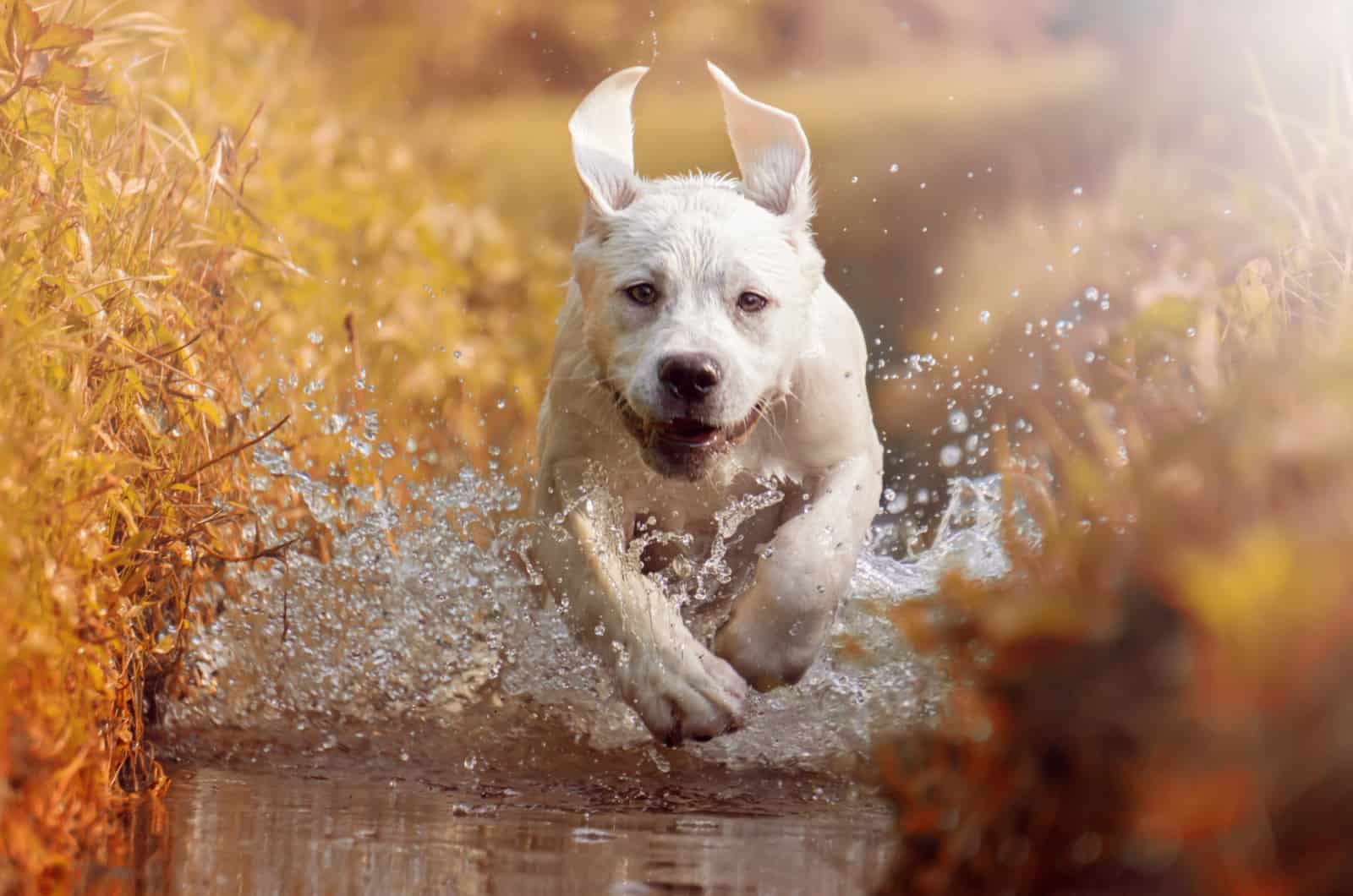
During this period, it is possible that your pet will show more mature behavior, at least in some situations, but it’s still impossible to expect a nine-month Lab puppy to behave like an adult male or female all the time.
Even when they are quite old, Labradors never lose the innocence and playfulness of their puppy years.
However, if you can satisfy your dog’s requirements for exercise and mental stimulation, it might become far less anxious and more willing to act appropriately.
Every day, you should take your pet out for some activity, but you should be careful not to exert too much effort, so that you don’t end up hurting it.
You can keep them intellectually and physically active by providing them with toys to play with during their leisure. Additionally, this assists in putting a stop to negative actions.
When it comes to spaying/neutering, dog owners and experts will agree that it’s better to wait a bit more than sterilizing the pet before they develop.
Therefore, if you’re thinking of getting this procedure done, I’d suggest you start thinking about it now, but prolong it until the pup is closer to one year old.
Ten Months
Essentially, your pet is still growing and developing. Although they’re still not adult Labradors, they’re not far from it either.
During the tenth month of their life, these puppies will continue to grow both in height and in weight, but you should become aware of the fact that at this point, they might easily develop overfeeding issues.
On the other hand, those dog owners who have developed a lovely bond with their pups will be more than delighted to spend quality time with their furry friends.
When their muscles get more developed, you should begin to increase the intensity of their workouts by going on walks with them for around forty-five minutes on a daily basis while also allowing them more playtime at home.
You won’t be overworking them this way, and they’ll still be able to meet all of their requisite energy demands, including more challenging tasks and exercise.
Eleven Months
Now that your canine is approximately one year of age, it is considered to be completely adapted to the lifestyle of the family.
Labrador Retrievers will spare no cost to show all of the love they have for the whole family, including young children.
These pups are always overjoyed with the fact that they belong to a family, which is why they often show their love and affection towards everyone they know.
When it comes to training, you might continue with daily walks, and add time until they are spending at least an hour outside per day.
You can either choose whether you want to go for a lengthy walk or split that hour into two walks (in the morning and before sunset).
Outdoor activities help the pup develop properly, and also keep the dog’s health in good condition, but they also help develop their social skills.
Labradors are large dogs with a giant heart, and they love spending time outside playing with other canines and animals in general, be it in dog parks or in any other place.
As soon as they’re eleven months of age, they will be ready for these adventures.
Twelve Months
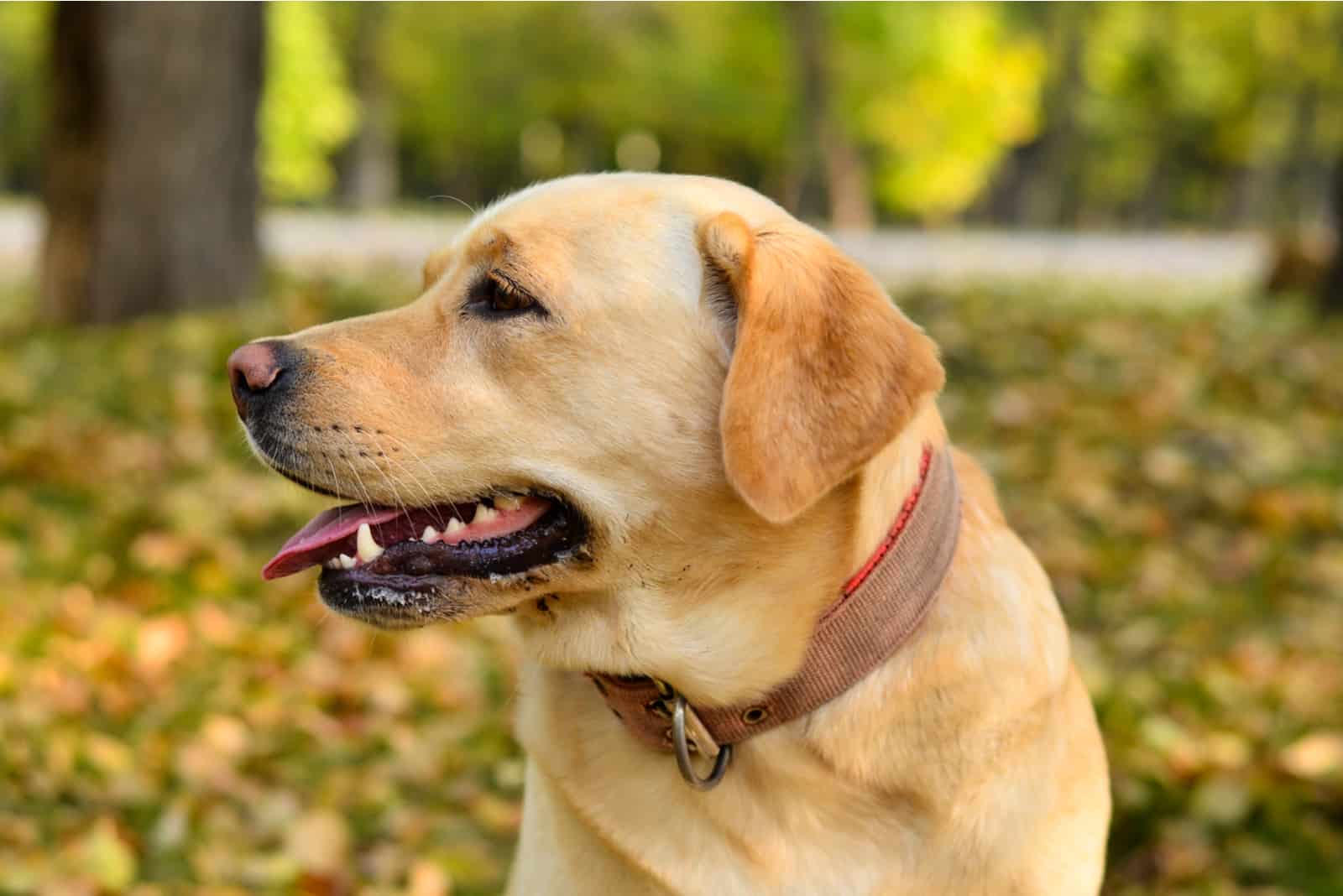
And… your pup has officially become an adult dog now that it celebrates its first birthday. It’s time for the owner to finally relax a bit more, and enjoy the experience of becoming the owner of one of the most popular dog breeds for families.
Although training isn’t overly challenging, it’s fairly difficult to instruct a young pup to listen.
However, all that hard work will pay off as you will have a properly-trained Labrador pup that will be the best version of itself… I’m sure.
Still, you need to know that both female and male Labradors will act similarly to pups even when they reach adult weight and height simply because they can.
This is their nature, which is almost the same as the one of the Golden Retriever. Essentially, their playfulness is one of the reasons why these pups are considered a great choice for families.
Make sure to continue providing them with the appropriate nourishment and activity for their body, so that they can have a healthy weight for the rest of their life.
Once your pup turns two, don’t forget to take it for a regular checkup, and ask for a test for hip dysplasia, which is a part of the standard procedure.
Adult Labrador Retriever
Essentially, after your pup celebrates its first birthday, it’s already considered to have reached adult height and weight, although there might be cases where pups continue to develop even after the one-year milestone.
To find out how much your Lab has developed over the past several months, you can speak with your vet.
Your pup should be alright as long as it has eaten adequately, has not been sick for an extended period of time, and has not been damaged in any other way.
Because Labradors are such fantastic people-loving and outgoing canines, you can expect your mature dog to be fully accustomed to humans and other animals – if it has been properly socialized.
Throughout the majority of their early stages of life, male and female puppies will measure approximately the same, with just a slight difference being noticed after they enter maturity.
How Big Does My Dog Get?
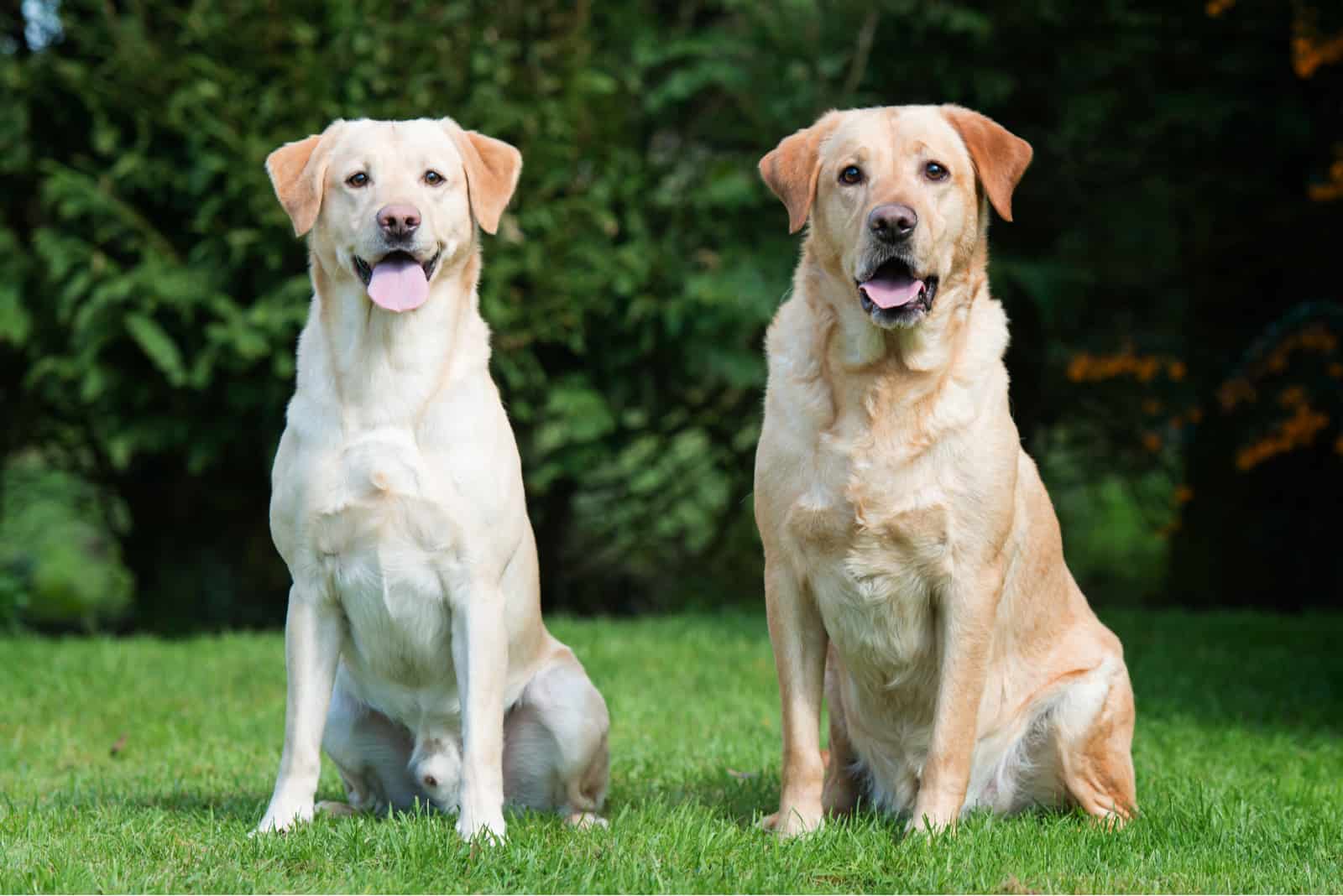
There are a few broad signs that might be used to make educated guesses regarding the size that Labs will get.
For instance, puppies that are born with large paws are expected to grow up to be big pooches. However, that does not provide a clear and precise understanding as it just represents expectations of the dog’s size based on whether the paws are big or small (big paws equal a big dog, but without any precise measurements).
You might get a better sense of how large your puppy will get once it becomes mature by using a growth chart for Labradors, which is especially useful for those who want to keep track of their pup’s development.
However, these growth charts are based on general calculations of a Labrador’s growth, and the average weight that is stated on the AKC’s breed standard for Labs.
Pet parents can often be out of standard with their size, so your pup might potentially inherit its parents’ genes and not fit the size stated in the Labrador weight chart above.
Read Next: Why Labradors Are The Worst Dogs +5 Things To Change That
How Do I Measure My Labrador Pup?
One of the best and most popular ways to measure a Lab pup is by weighing yourself on the bathroom scale, repeating this while holding your dog, and then calculating the difference between these two numbers, which is the weight of the doggie.
However, if the canine grows too much or if it simply becomes impossible to be held (for example, an adult German Shepherd will almost never allow it), you can either place your dog into a container that is already on the scale and let it play with the toy of its choice while you’re measuring it.
Or, you can follow the guidelines of the Body Condition System, which will provide you with a score that defines whether your pup is underweight, fit, or obese.
The BCS can be used on all types of dogs in all stages of life, including old Labrador Retrievers.
What Impacts The Growth Of Labradors?
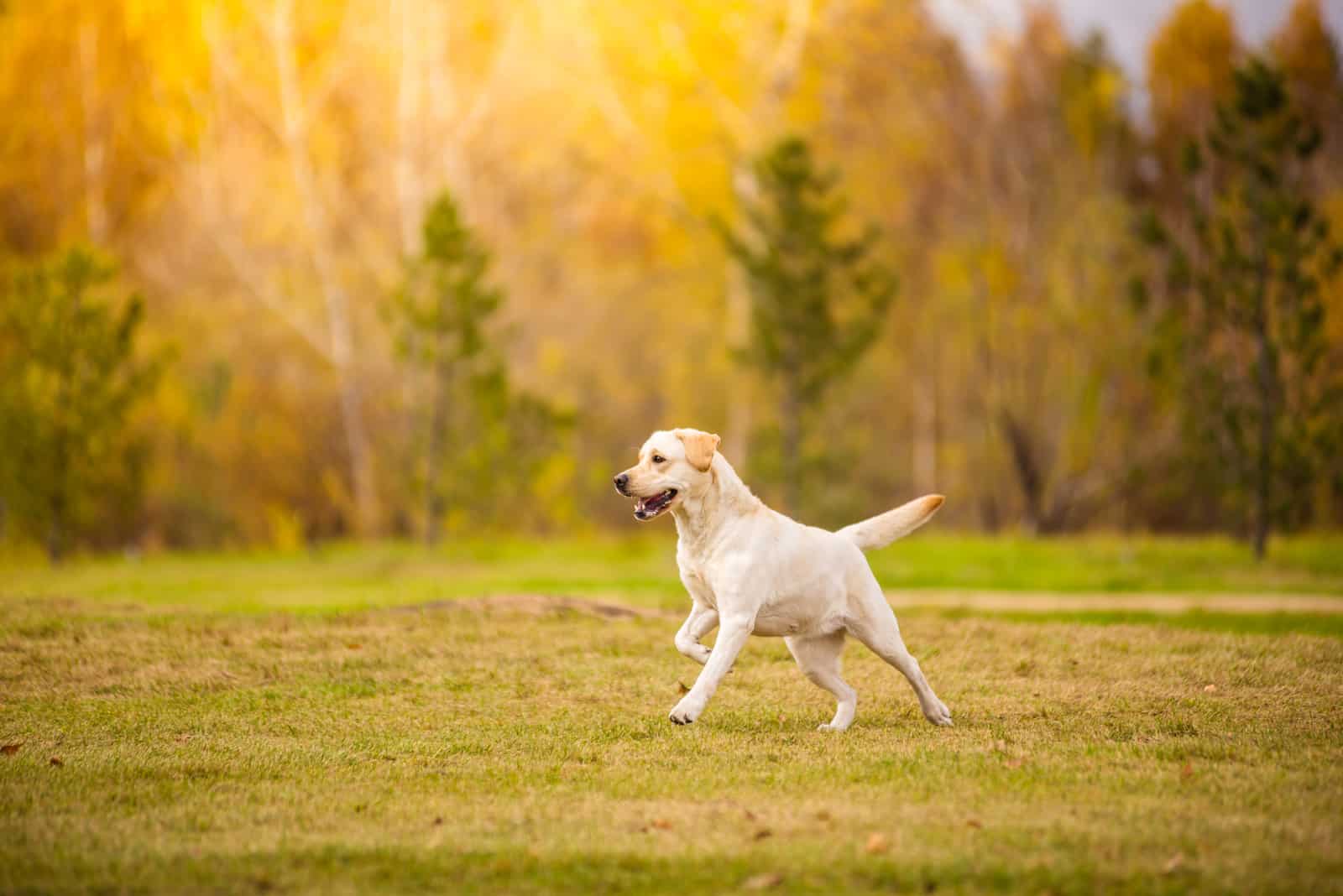
There are different factors and circumstances that can affect your canine’s growth. They can help you have a better understanding of what actually impacts the size of your furry companion, which can essentially help you deal with potential weight gain, weight loss, or any other issue related to the Lab’s growth.
By knowing which factors influence the growth of your pet, you will be able to know whether you can do anything to improve your pup’s growth and health or simply give up trying if you can’t change anything (like genetics).
Genetic Background
Labs are usually bred to be big canines, even though today, they’re primarily bred to be family pets regardless of their size.
Although some puppies will either be larger or smaller than others due to differences in their genetic coding, this trait is inherent to all canines as they all inherit a certain set of genes from their parents.
Taking a good look at the ancestors can provide you with some straightforward information about the size that your puppy will eventually reach.
Still, this is only an assessment, and it is possible that it is wholly inaccurate. The genetic contributions of parents are merely one component of the whole picture.
They could possess genes that cause their descendants to either be taller or shorter than they are, depending on the trait the pups inherit.
Since you won’t know for sure until your pet has achieved full maturity, it’s best to just relax and let nature work its magic until then.
Health
There is a possibility that the development of puppies will be obstructed if they get ill at an early age, and continue to suffer from the illness for a lengthy period of time.
If your pet’s condition isn’t up to par, it won’t be able to achieve its full potential as it matures, so make it a habit to take your pet to the veterinarian for checks on a regular basis.
It’s possible that your Lab’s growth has been stunted due to an injury as well.
During their early years, it is important to ensure that your Lab does not push itself too hard during recreation or training.
Provide puppies with a large amount of open space in which they can play and practice without injuring themselves or others by accidentally running into barriers.
Diet
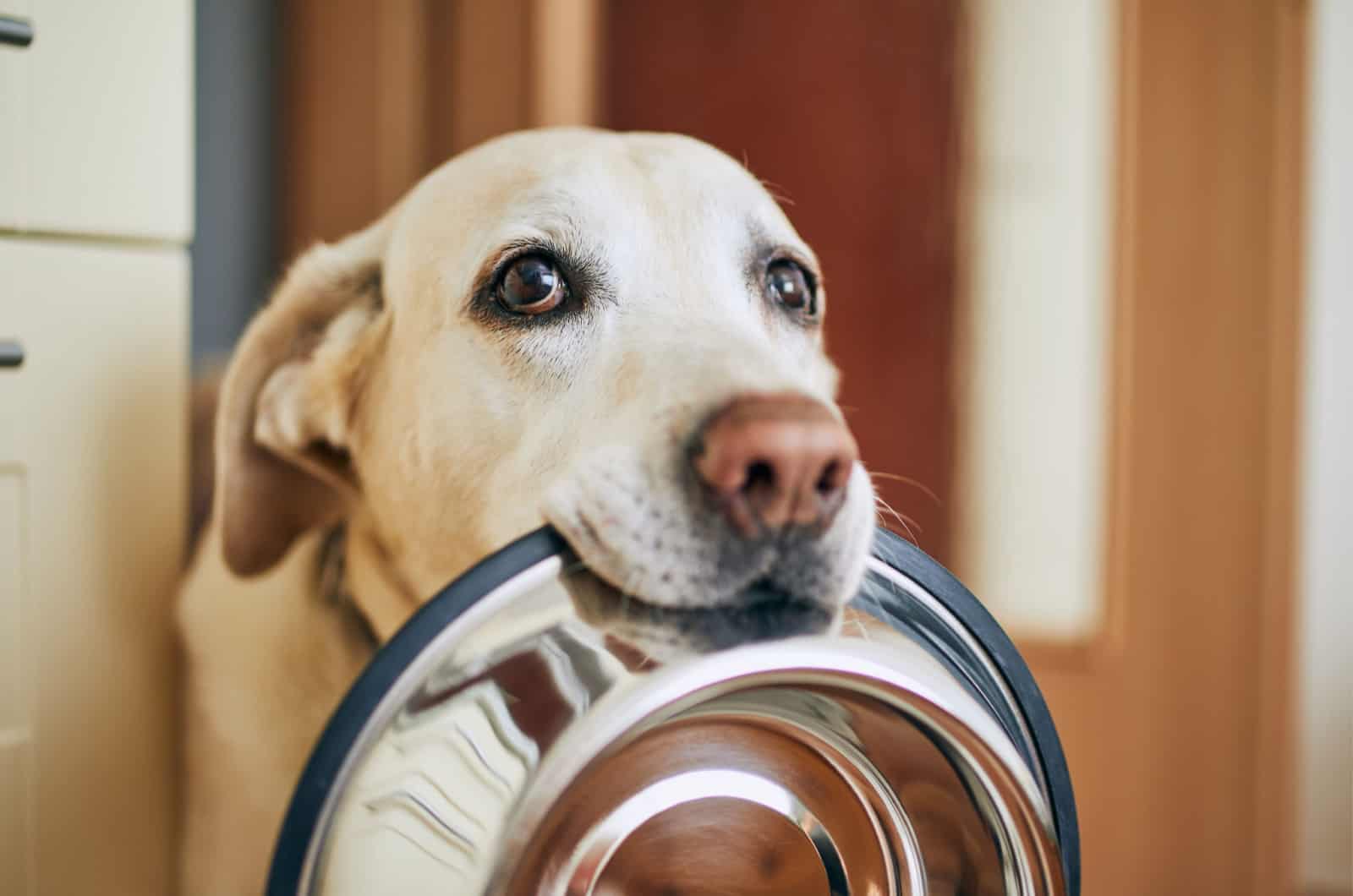
A healthy diet during the early months of a dog’s life is crucial for the proper development of a young Lab. It will not only maintain the dog’s weight at a healthy level, but it will also benefit the growth of bones, joints, muscles, fur, etc.
If you’d like to keep your pup at the average weight that is considered healthy by the American Kennel Club’s (AKC) breed standard and according to the Labrador Retriever growth charts, then a balanced diet is key, along with proper activities.
The nutrition that your dog receives will play a significant role in determining whether it will be a giant or a little dog. This does not imply that overfeeding will result in a larger canine because there are situations in which this is not the case.
Essentially, feeding your pup more than it should eat will result in nothing else but an overweight pup. However, if you don’t prepare balanced meals, your pup might easily become underweight and stop developing overall.
Therefore, if you’re not sure how much food is enough, you can always contact your vet and ask for help.
Can Spaying And Neutering Affect The Growth Of My Labrador?
After having its reproductive organs altered (neutered or spayed), your dog will not instantly cease developing.
On the other hand, in general, canines that were neutered or spayed while they were still puppies are a fraction of an inch smaller than canines that were sterilized at a later age.
It is also reported by dog experts and experienced dog owners that prematurely-sterilized pups have a higher risk of developing joint and bone health conditions as their body doesn’t follow the same growth rates.
According to the most recent findings in scientific research, if you are able to wait to sterilize your dog until it is at least one year old, your pup will have properly-matured bones, and there will be no negative impact on its size or health.
When Will My Lab Stop Growing?
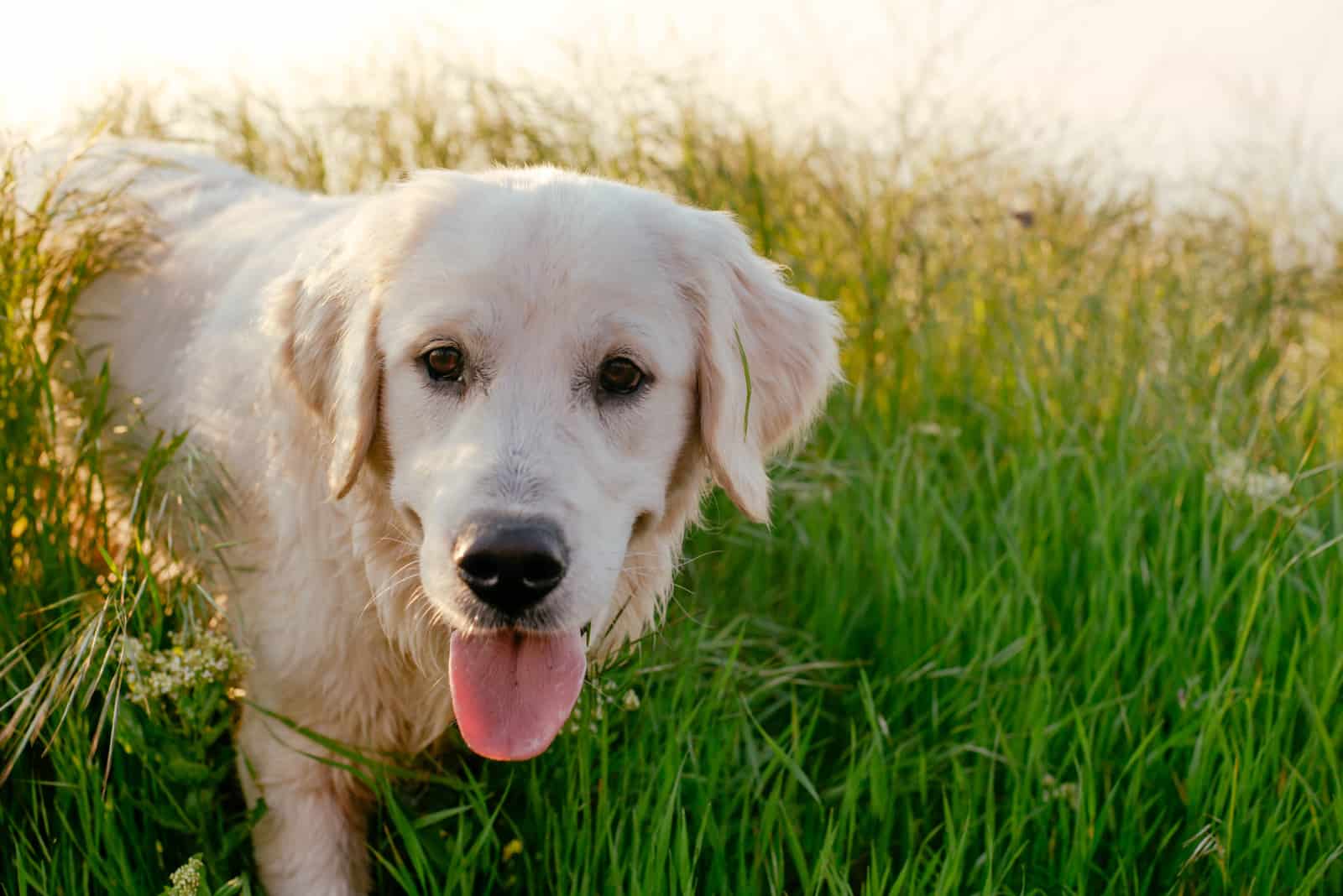
Every canine is an individual, and the subject of when they reach their full adult size is primarily determined by the specific breed.
Your pet should have attained its full height and weight between the ages of nine and eighteen months, respectively.
The majority of breeders are in agreement that this type of dog will reach its maximum height somewhere during its second year of life.
In spite of this, the amount of weight that they acquire during that year shouldn’t be big, considering that the majority of their development has already been completed before they turn one.
Keep in mind that not all canines have the same weight, and there are high chances that your pup’s weight will stand out from the weight chart, even when it grows into a full-sized Lab.
Of course, if the discrepancy between your pet’s weight and the recommended weight from the chart is too big, you might need to pay more attention to its diet or search for a reason together with the vet.
Differences In Size of Different Types Of Labradors
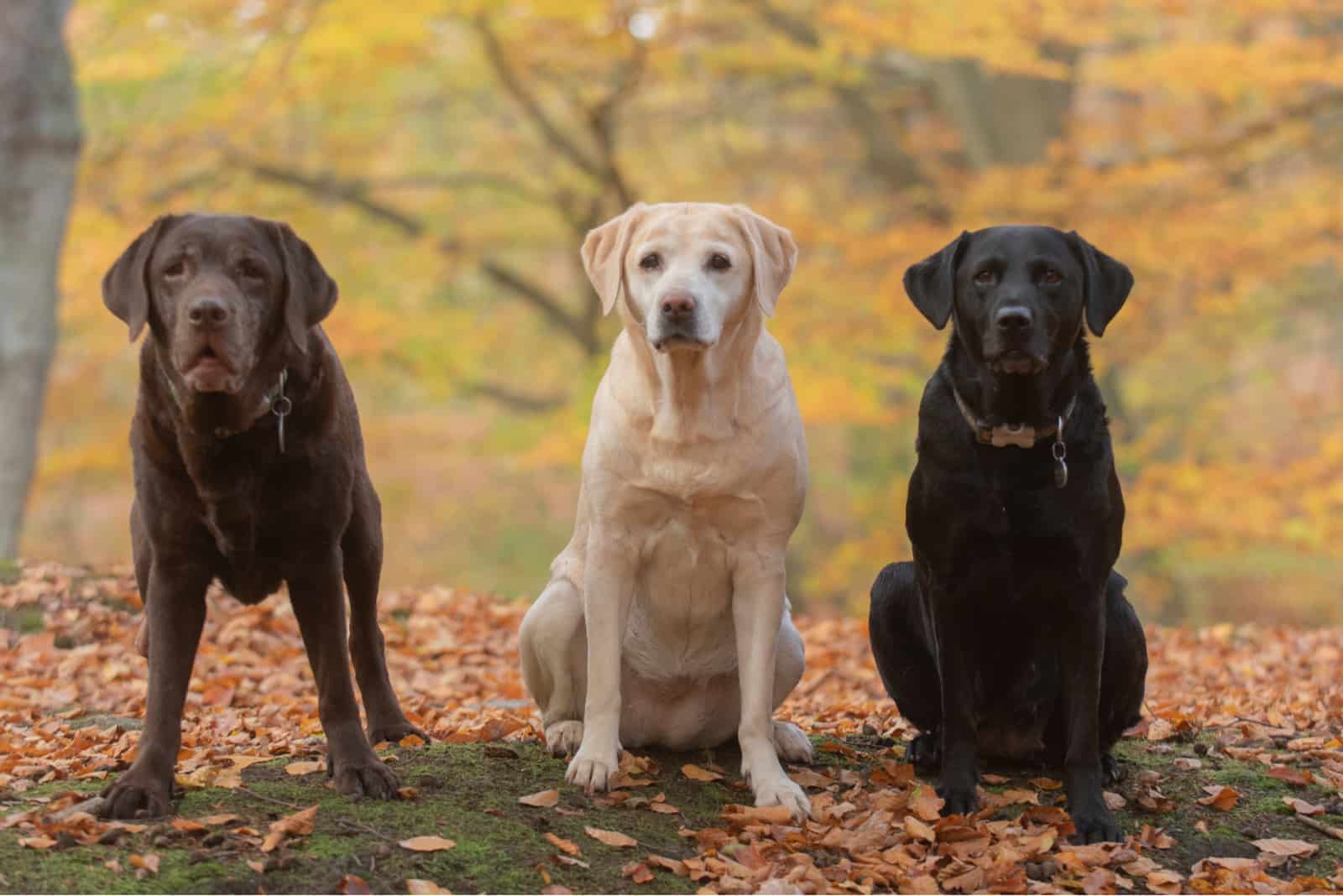
In spite of the fact that they are both considered to be members of the identical canine breed, English and American Labs can be distinguished from one another.
While American Labs have a more slender physique and a coat that is significantly finer, English Labs have a tendency to be taller, heavier, and more robust than their American counterparts.
Additionally, English pups have a heavy coat that is waterproof.
English Labs often weigh more than their American counterparts because of their muscly and powerful build. Their maximum height is roughly 22 inches, making them somewhat smaller than American Labs.
As a matter of fact, it is very uncommon for English Labs to reach up to 20 lbs more than their American counterparts without being categorized as overweight.
English Labs are believed to be considerably less hyperactive and more easy-going than their American counterparts, whereas American Labs are thought to be significantly more energetic and lively than their English relatives.
However, English pups are not in the least bit lazy, and they still have a good deal of energy and endurance to spare for everybody.
Final Thoughts
The Labrador growth chart is considered to be one of the most reliable sources and predictors of what your Lab pup will look like in the future.
This growth chart is perfect not only for those who can’t wait for their puppy to grow up, but also for dog owners and breeders who want to keep track of their pup’s development, including its growth, weight, and height.
Labs might be big pups, but there is still no canine breed, except for Golden Retrievers, that could be better family dogs than Labs.
Therefore, if you decide to buy a Labrador puppy, I’m sure you won’t regret it not even for a second.
Wish you good luck, and stay Pawsome!
READ NEXT:
Labrador Colors: The Pinwheel of Colors and Markings
10 Best Dog Beds For Labrador Retrievers: Reviews And Buyer’s Guide
Labrador Ear Cropping: You What?!













